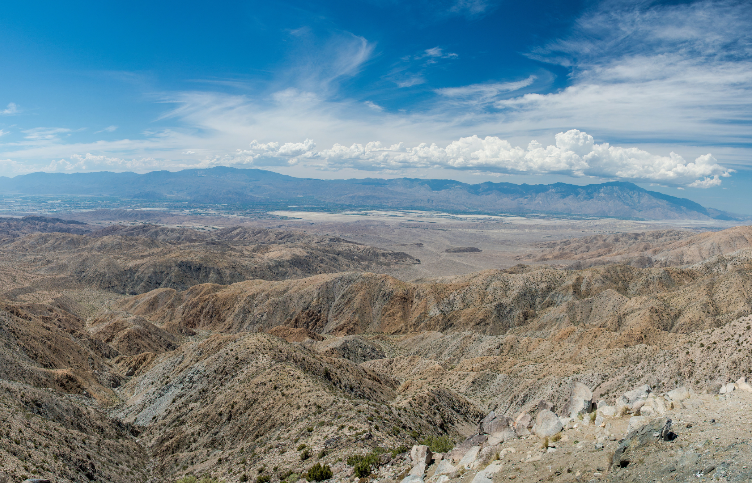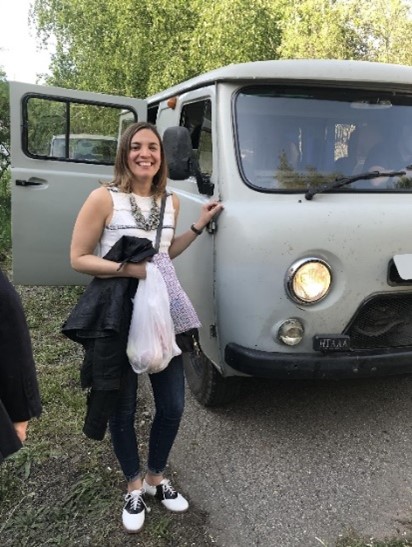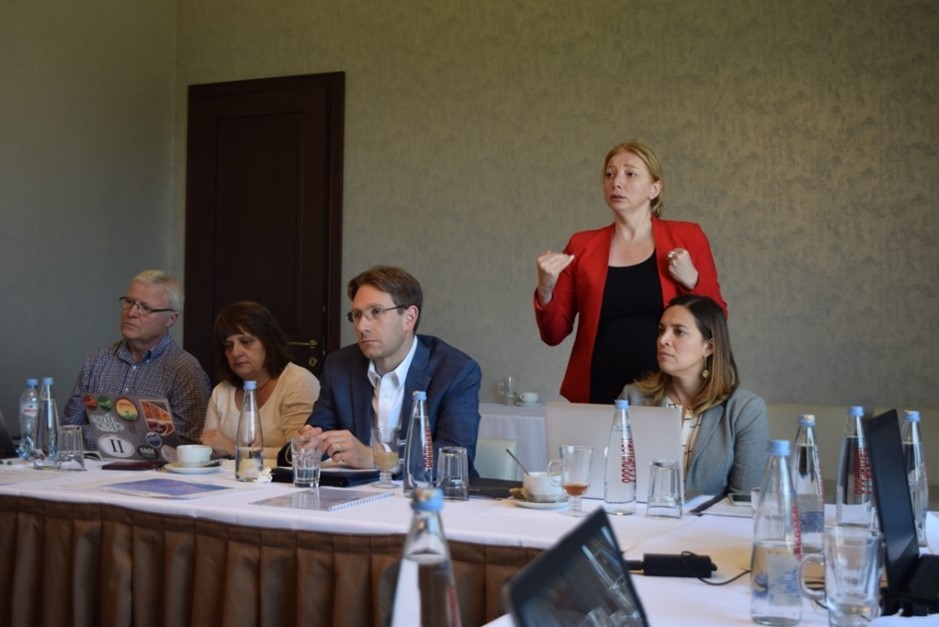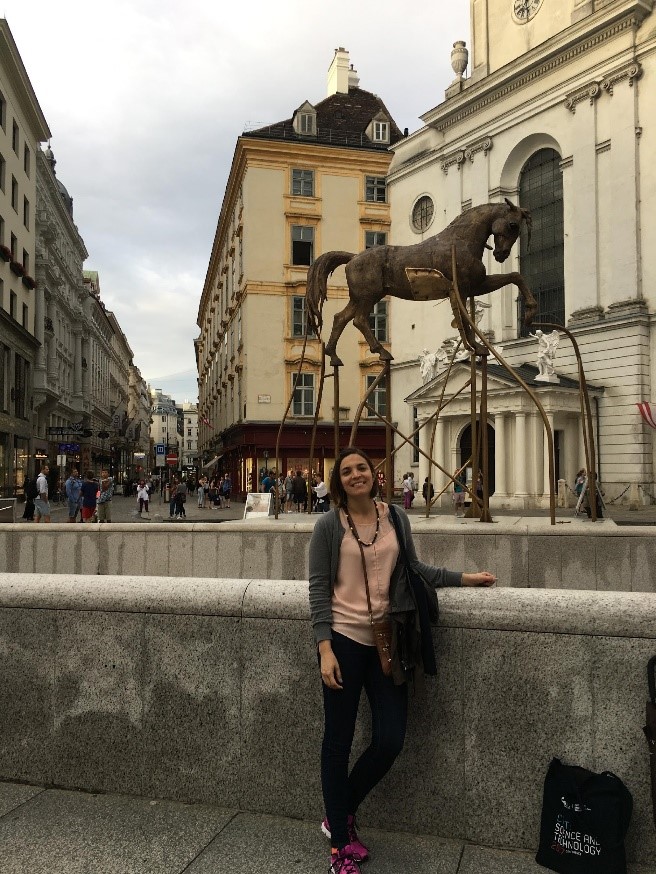YPN Stories from around the world
From Costa Rican volcanoes and Californian faults to the CTBTO in Vienna
Dr. Ana C. Aguiar works at the Lawrence Livermore National Laboratory in northern California
While growing up, earthquakes were a normal part of YPN member Dr. Ana C. Aguiar’s life. Located in a very active tectonic environment, Costa Rica’s geological setting inspired her to study geophysics and pursue a career as a seismologist with expertise in earthquake detection and location. She works at the Lawrence Livermore National Laboratory (LLNL), in Livermore California, giving her a unique opportunity to collaborate with people from many other countries and participate in CTBT related activities.
California’s defining geological features remind us to be prepared
Dr. Ana C. Aguiar is not foreign to the potential hazards following earthquakes. She is originally from Costa Rica, where the Cocos Plate is subducting beneath the Caribbean Plate.

Now she lives in northern California, which is also affected by highly complex geology.
- I live in northern California, not only because of the ideal weather but because it is a very important place to study and understand earthquakes. I live in the San Francisco Bay Area surrounded by many faults, two of which constantly remind us to be prepared: The San Andreas Fault and the Hayward Fault.
Passion for Earth sciences
After graduating with a B.S. in physics from the Universidad de Costa Rica in 2005, the earth sciences sparked an interest in Ana. One of her professors advised her to go to one of the national volcano and seismology observatories of Universidad Nacional.
- There I was introduced to seismology and was presented with an opportunity to pursue a master's degree in geology at Central Washington University, working on seismology related to slow slip events.
Afterwards, she moved to Northern California to study at Stanford University, where she received a Ph.D. in Geophysics in 2014.
- While I was getting ready to defend my thesis, I applied for a postdoc at LLNL and was lucky to have been offered the position. I started working at LLNL in May 2015, where my postdoc mentor Steve Myers first introduced me to the work he was doing related to the Comprehensive Nuclear-Test-Ban Treaty (CTBT).
New approaches to aid in event detection and location
Dr. Ana C. Aguiar is a staff scientist in the Seismology Group of the Geophysical Monitoring Program within the Atmospheric, Earth, and Energy Division at the Lawrence Livermore National Laboratory (LLNL). She explains that she has been fortunate to work on an array of projects that cover many aspects of seismology, allowing her to learn new things and concurrently define her biggest interests.
- My research focuses on cross-correlation techniques, data mining, and data science approaches to aid in event detection and location to address increasingly larger and more complex data sets. My work at LLNL also focuses on seismic data de-noising and de-signaling, microseismicity analysis in geothermal settings, earthquake ground motion simulation analyses, and seismic hazards.
Ana says that she has spent a lot of her time understanding earthquake detection and location methods, such as the assumptions that are taken to apply them and their limitations, as well as how these can be improved with new approaches. According to Ana, the new focus on data mining, machine learning, and the fast changes in computing capabilities make this a very interesting topic to focus on.
Science has no borders

When we ask Dr. Aguiar what her favorite part of her job is, she emphasizes collaboration – both within the LLNL seismology group of more than 15 seismologists and with people from different countries.
- This is one of the main reasons I love working at LLNL and what sparked my interest in CTBT related work as well. Although not all CTBT related, in the last 6 years I have had the chance to travel to Japan, Austria, Kyrgyzstan, Kazakhstan, Georgia, and Costa Rica (twice!) and had the opportunity to meet colleagues from Europe, the Caucasus, Central Asia, the Middle East, and all of the Americas (North, Central, and South).
She feels lucky to be a part of the scientific community and believes that science has no borders. Besides, Ana explains that work-related travelling also presents a chance to explore new cultures.
- The opportunities to travel have exposed me to many different cultures, ways of life, and most importantly, different kinds of food! Sharing a table with people from around the world is always an enriching experience.

Wishing to bring the CTBTO forward
Dr. Aguiar tells us about her participation in several CTBT related activities, starting with an NDC capacity building and Regional Seismic Travel Time (RSTT) workshop and training in Costa Rica where she was introduced to the importance of the CTBTO PrepCom for the first time.
- Since then, I have participated in two SnT meetings and have developed an interest in solidifying ways to contribute. I have more recently participated in the Working Group B (WGB) meetings and was able to attend the latest virtual WGB meeting (WGB 57) in August 2021.

To ensure that there will be a new generation of experts and leaders to take the work of the CTBTO forward, it is important that young scientists and technical professionals can meet and establish relationships.
Ana joined the CTBT Young Professionals Network (YPN) in August 2021 and thinks it is a nice way to strengthen collaborations within the CTBTO.
- Our sponsor recently mentioned the YPN, and it looks to be a great opportunity to meet other early-career scientists in the CTBT community who also have a similar science background. I hope to use this space to make connections for future collaboration, whether through WGB or other meetings.
Dr. Aguiar is presenting her work at the upcoming Waveform Expert Group meeting
Ana is currently planning to participate in the upcoming Waveform Expert Group meeting in October where she will present her work on seismic detection screening. This work focuses on the application of the dynamic correlation processor, an event detection method based on cross-correlation.
- The aim is to identify and screen detections that are not of interest to monitoring before they are passed to the International Data Centre’s automatic system, and in turn, significantly reduce analyst effort.
She hopes to contribute to CTBT organized events for many years to come.
- I believe my background and research focus has direct application to what WGB and the Waveform Expert Group focuses on, and I understand the importance of this work.